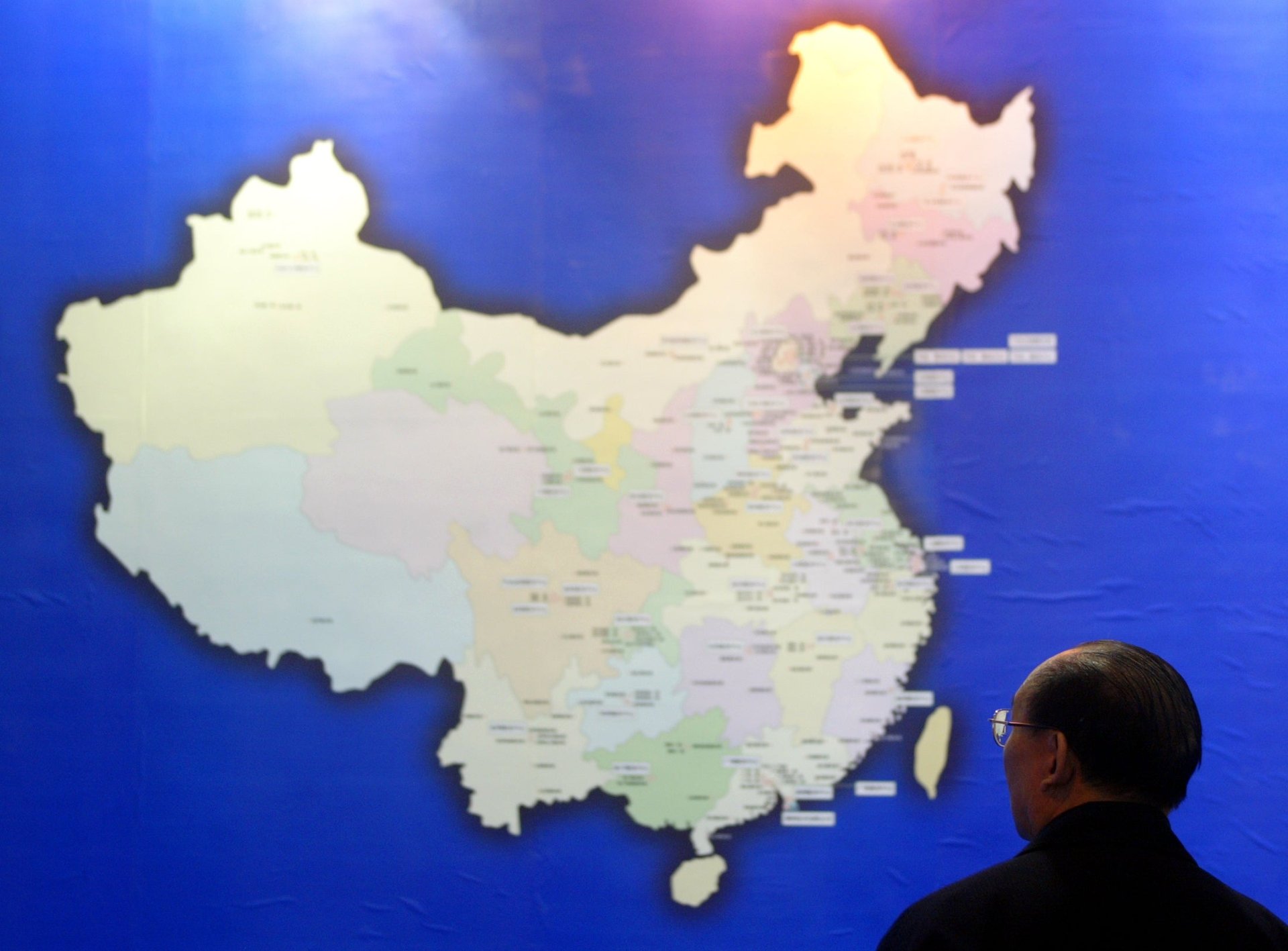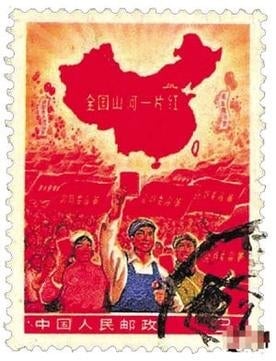China says Taiwan was always part of it, but an old stamp shows a telling propaganda snafu
If you were to rely on the official Chinese version of events, the island off the southern coast of Fujian province, Taiwan, has “always been part of China.”


If you were to rely on the official Chinese version of events, the island off the southern coast of Fujian province, Taiwan, has “always been part of China.”
The website of the Ministry of Foreign Affairs of the People’s Republic of China, for example, proclaims: “Taiwan has belonged to China since ancient times,” and then sets out a series of dates and events meant to prove the point, while conspicuously sidestepping the issue of exactly what constituted “China” in “ancient times.” The argument is one China has been making with growing force in recent times, and that many Chinese abroad feel it is their duty to make too.
This week, China is in the middle of a campaign “to promote people’s knowledge of the national map and awareness of national territory. ” With the pithy theme of “Regulate the usage of maps, no dot on it can be mistaken,” this activity is so avowedly politicized that the article cites Ge Yuejing, a professor at Beijing Normal University’s geography school, as saying that “national map education should be included in ideological and political education as well as geography classes.”
Chinese nationalistic outrage over Taiwan—which has never been governed by the Communist Party that rules over the Chinese mainland—has in recent years seen a professor at Australia’s University of Newcastle made to apologize for saying that Taiwan was a country. Last year, airlines had to change how they displayed Taiwan in their ticketing menus to passengers. And this year the Chinese Academy of Social Sciences proposed that all international companies, including the likes of Apple and Nike, be urged to refer to Taiwan as part of China’s territory, while the London School of Economics also came under pressure after a campus artwork, a giant globe of the world, showed Taiwan as separate.
But the past has seen the occasional telling slip in the official line.

Take this postage stamp from 1968, which was sold at auction for $2 million in November 2018 for its incredible rarity: it portrays a red map of China with the words “The Whole Country Is Red” printed on it in yellow, and an endless crowd of happily marching peasants, workers and soldiers beaming and holding up the Little Red Book of Mao Zedong sayings. Underneath, a slogan in Chinese characters celebrates the Great Proletarian Cultural Revolution. However, the stamp had to be recalled and pulped, because one part was wrong: Taiwan lies in its correct place, but it’s lily-white, totally outside of the revolutionary jubilations of the “red country.” Now, just nine remain, extremely valuable to philatelists.
The map on the stamp looks quite similar to the one that was printed on some The Gap tee-shirts last year, sparking a lot of trouble for the American garment-maker.
Philately aside, the ebb and flow of national propaganda on the topic of Taiwan has closely followed Chinese political developments. Before the Korean War, which saw Chinese troops mobilize on the side of North Korea, a military focus on Taiwan was impossible—making strong rhetoric a necessary substitute. In the late 70s and through the 80s, though, when Deng Xiaoping launched the country’s economic reforms, Taiwan was seen as a vital source of direct investments, and it would have made no sense to antagonize it with threats of armed invasion. As scholars have pointed out, Beijing’s stance became far more strident after the Tiananmen Square crackdown of 1989, when nationalism started to be one of the leading ideologies with which the party maintained its governing legitimacy. Still, a stamp ejecting Taiwan from the national boundaries was a faux pas even for the 60s.
A postage stamp from the same year printed in Taiwan can be bought on eBay for less than 5 US$. It shows the island of Taiwan, with rays beaming from it, and a flag of the Nationalist Party, or Kuomintang, over the rest of China—the troops of Chiang Kai-shek, which had retreated to Taiwan in the 1940s after their civil war defeat to the Communist Party, were still awaiting the appropriate moment to conquer the whole of China again. It never came.
Before that Taiwan was under the same government as the rest of China for just two centuries: it was occupied in 1683 by the invading Qing troops (1636-1912), who brought to an end the rule of the Ming Dynasty (1368-1644) and took over the country. The Qing significantly expanded the territory under their control to also include modern day Xinjiang, Tibet, and Mongolia, both the part of it that is today a Chinese province, and the independent Republic of Mongolia bordering China. Some Ming loyalists, hoping to launch a reconquest from Taiwan, fled to the island—but as with the Nationalists, the time for renewed glory never came.
It was the Qing’s turn to cede the island to the Japanese in 1895, and that rule ended with Japan’s defeat in 1945 at the end of World War II, beginning the Nationalist period. This was the government that was recognized by the United Nations as representing “China” up until 1971, when the Communist-ruled People’s Republic of China, founded in 1949, was recognized instead.
So propaganda aside, Taiwan was never ruled by that China, something that even the Ministry of Posts and Telecommunications seemed to admit to for a moment, even if by oversight.